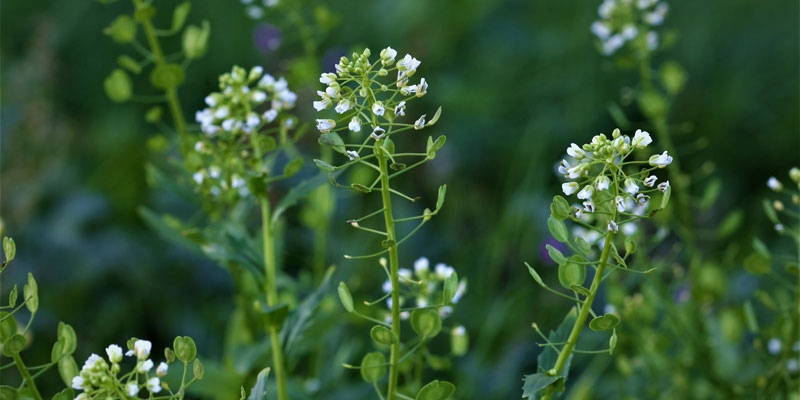Marks Lab receives a major grant in effort to bring resilient Pennycress to the market.

It’s a process as old as agriculture. Whether picking an ear of corn with the most kernels or harvesting the tallest stalk of wheat, farmers and agronomists have selected crops for desired traits dating back millennia. As these plants become further domesticated, their growth and harvest are easier to manage. For David Marks, Ratan Chopra and their colleagues, however, they’re attempting to fast-track this process with the undomesticated pennycress.
“Pennycress is an extremely winter-hardy plant that’s often seen in ditches,” says Marks, professor of plant and microbial biology. “Our goal has been to develop pennycress as a cover crop that produces an oilseed that functions in ecosystem services and aiding the environment.”
Cover crops are plants farmers use often over winter to prevent environmental degradation, such as soil runoff or removal of excess nutrients while traditional crops aren’t in the ground. While helpful for the soil, cover crops often come at little to no financial gain to the farmer who can’t usually sell the crop at the market. This is where Marks and colleagues look to make pennycress a profitable plant.
“We have developed a line of pennycress that produces an edible oilseed that has potential to supply the farmer with a new source of economic revenue,” says Marks.
To do that, though, is the challenge. Beyond domestication, the team of researchers needs to develop a line of pennycress that produces edible seeds in a timespan that works for farmers, ideally harvesting before traditional plants go into the ground. Marks, Chopra and their colleagues recently received a $13 million grant from the Department of Energy over the next five years to further expand this research and develop a climate resistant crop. Luckily for the team, pennycress is quite similar to a well-researched and fully gene-sequenced plant, Arabadopsis.
“We are whole-genome sequencing hundreds of mutagenized plants to identify the gene mutations that they carry and then using information from Arabidopsis research to predict the mutant phenotypes,” says Chopra, a senior research associate in the Marks lab and aggregator of the growing mutation library. “That way we can find solutions and build a database that shows the full scope of pennycress mutations.” The goal will be to build a library of mutants containing mutations in every gene in pennycress. Already they have a population containing mutations in more than half of the pennycress genes.
Another objective of the DOE project will be to sequence hundreds of natural variants of pennycress adapted to various environments around the world. Here the goal will be to identify the gene differences that allow pennycress isolates to strive in their local environments. This information will be used to aid in the creation of new domesticated lines of pennycress that can produce maximum yields of oilseeds under different environmental conditions here in the U.S. and elsewhere.
“We will try to understand how those environmental variables have allowed for pennycress adaptation,” says Chopra. “Then we will utilize that information to find mutants in our resource and see if we have a solution for better drought tolerance or better root architecture. That’s important because once we make it a crop we want to make sure that we have the data to overcome those challenges.”
-Lance Janssen